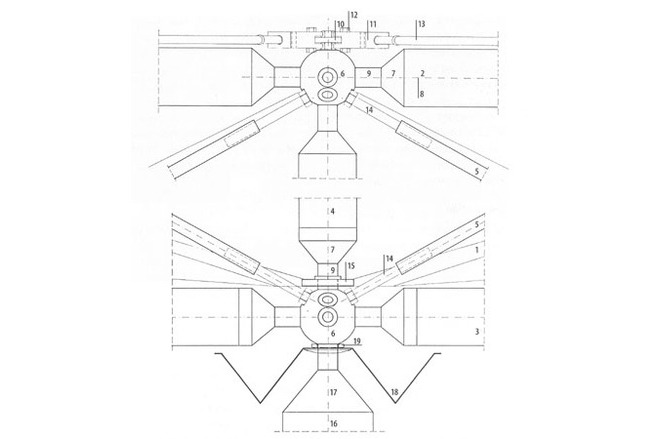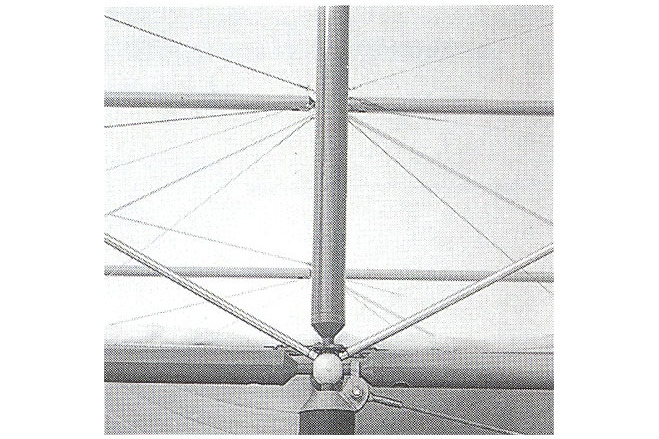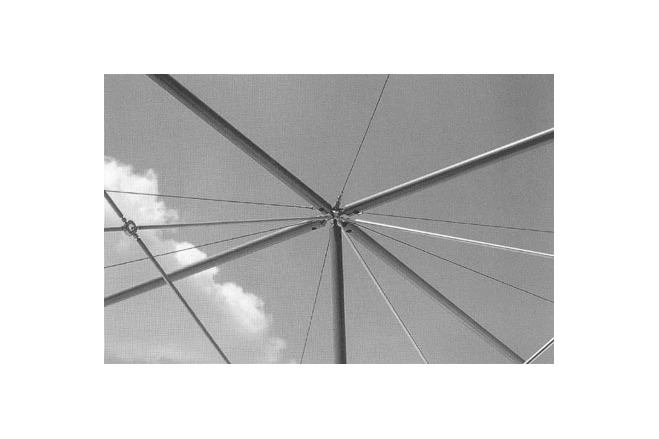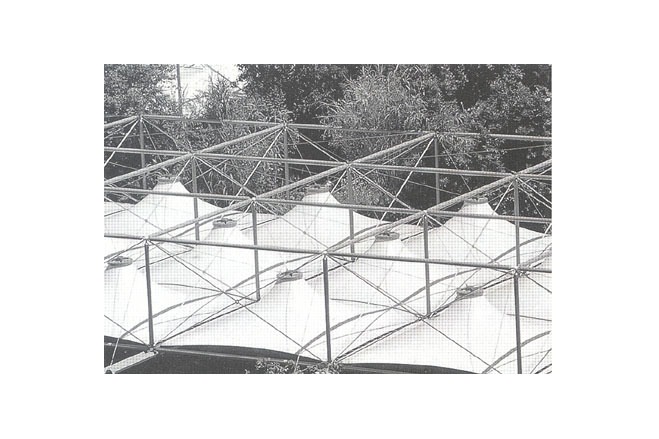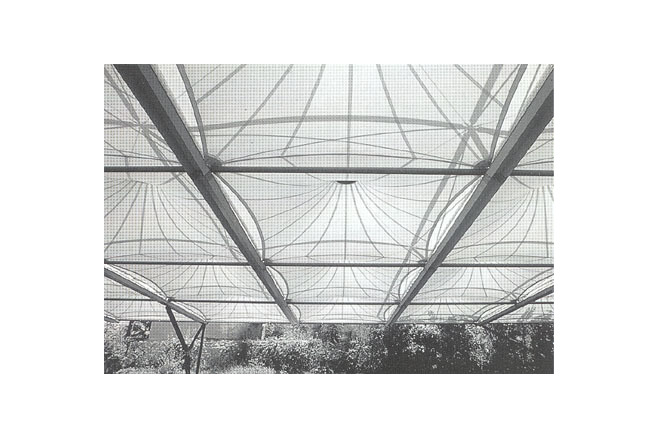Roof over Archaelogical Excavation Sites on Pianosa and in Desenzano sul Garda (Italy)
General information
-
Location address
Island of Pianosa
-
Location country
Italy
-
Year of construction
1990
-
Name of the client/building owner
Superintendentia Archeologica della Lombardia
-
Function of building
Historical buildings & monuments
-
Degree of enclosure
Fully enclosed structure
-
Climatic zone
Mediterranean - mild winters, dry hot summers
Description
Design
The excavation sites of the Roman villa Agrippinas on the island of Pianosa in the Tyrrhenian sea south of Elba are protected by a modular membrane roof with a space truss as primary structure. A similar system was used to protect the mosaics and wall remains of a villa in Desenzano sul Garda (at the south end of the Lago di Garda near Brescia), both with carefully designed details.
Brief
The roof of the excavation sites has the function of protecting the archaeological finds from the weather and simultaneously limiting the vegetation growth within the excavation site.
Desired were:
- Simple erection through prefabrication and application of a modular structure made from small and lightweight elements, being also easy to transport, to ease the sometimes difficult access to the excavation sites.
- A variable erection to allow a short-term adjustment during the survey of the foundations. The chosen structural system of the space truss is very flexible: If during the excavation of the foundations it turns out, that the planned supports must be moved because of the excavations, then a redistribution of the supports is possible by modifying the structural analysis and possibly by adding reinforcements, like for example additional cable stays.
- A later expansion of the excavations without changing the existing structure. - No or only slight interference with the excavations, small foundations.
- A certain translucence was desired, to avoid too strong a shadow under the roof, which would have inhibited the excavations. A high translucence had to be avoided to protect the archaeological finds from UV- radiation, to avoid glare and to keep the vegetation low.
- Easy adaptability of the structure to uneven ground by variation of the column lengths.
Plan
The roof at Pianosa has an abundantly varied plan. The 4 x 4-m grid follows the outline of the excavation site and allows an extension of the structure in every direction in case of an expansion of the excavation area, without the need to change the existing structure. Roofing the entire excavation site by a coherent membrane structure was not possible because of their special plan form.
In Desenzano sul Garda the roof consists of two near-rectangular plan shapes with 4 x 8 modules each, which are turned by 90° against one another. To adapt the plan form to the shape of the excavation site some edge modules were omitted.
Structure
The structure consists of tube columns and a space truss carrying the pyramid-shaped high point membrane elements. The steel structure is galvanised and painted.
The space truss serving as a roof structure is a double-layer grid of planar trusses with vertical compression struts and tension diagonal crosses. The tension diagonals consist of solid round steel bars with female threads and a two-piece, central tensioning ring at the crossing. The nodes are solid steel balls (Ø 90 mm) with milled planar bearing surfaces and bores with female thread to receive the bolts of the tension ties and compression struts. Conically turned steel parts with a shoulder/rebate form the transition between steel tube column and other compression members on one side and the bolt connection at the space truss ball node on the other. Tube columns are arranged on the grid lines along the edges and at re-entrant corners in the interior.
The three dimensional structure was analysed electronically for the loadcases of deadload, snow and wind.
Description of the environmental conditions
Foundations, anchorage
The vertical column loads and the horizontal loads from the wind bracing are carried into concrete pad foundations. Due to the space truss roof structure acting as a horizontal diaphragm, it was not necessary to carry substantial tensile forces into the ground; no guys or tension anchors have been used.The horizontal forces from the membrane roof are transferred in the plane of the roof by the space truss and carried into the foundations by the wind bracing.
Bracing, tension members
In Pianosa the structure is braced laterally by a cross bracing with tension ties made of high-strength stainless steel cables with galvanised fittings, steel fixings and prestressing devices. In Desenzano the wind bracing consists of corner braces forming 'rigid' frame corners between edge columns and truss girders.
The tension diagonals of the wind bracing are spiral strands, with swaged eyelet fittings at the ends, connected to the tube columns with welded steel lugs and bolts.
The hangers for the high point suspension were originally conceived as round steel tension ties and were realised as a spiral strand with end thimbles connected at the high point with bolts between lug plates welded to the high point and at the upper chord nodes by means of ring bolts and pinned purpose-made fixings.
[Soft Shells, Hans-Joachim Schock, p164-165]
Material of the cover
-
Cable-net/Fabric/Hybrid/Foil
Cable
-
Material Fabric/Foil
Polyester
-
Material coating
PVC
Main dimensions and form
-
Covered surface (m2)
16
-
Total length (m)
32
-
Total width (m)
16
Duration of use
-
Temporary or permanent structure
Temporary
-
Convertible or mobile
Convertible
-
Design lifespan in years
00-05
Involved companies
-
Architects
Studio Tensoforma
-
Engineers
Studio Tensoforma
-
Contractors
Tensoforma Trading S.R.L
Editor
-
Editor
Marijke M. Mollaert


